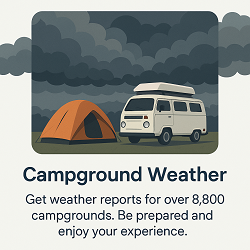Savage, MN Weather Forecast and Current Conditions
Current Conditions From Nearby Local Station

Feels Like 2°F
at
Point Forecast at a Glance







7-Day Temperature Trend
Week Ahead Summary
High temperatures dip from 18°F to a low of 10°F mid-week, then warm to 32°F. Unsettled weather expected with snow likely on at least 4 days.
Climate Context
This week's forecast shows temperatures running 4°F below the historical average for December. Normal highs for this period are around 28°F with lows around 13°F.
This Date in Weather History
1926 - Yuma, AZ, was soaked with 1.10 inch of rain, and by the 10th of the month had received 4.43 inches, making it the wettest December of record. The average annual rainfall for Yuma is 3.38 inches.
Savage, MN 7 Day Weather Forecast Details
Wednesday Dec 3

Night: Mostly clear, with a low around -8. West wind around 5 mph becoming calm.
Thursday Dec 4

Day: Increasing clouds, with a high near 18. Wind chill values as low as -16. Light south southwest wind becoming south 10 to 15 mph in the morning. Winds could gust as high as 25 mph.

Night: Mostly cloudy, with a temperature rising to around 22 by 5am. South southwest wind 5 to 15 mph, with gusts as high as 25 mph.
Friday Dec 5

Day: A 50 percent chance of snow. Cloudy, with a high near 30. West southwest wind around 5 mph. New snow accumulation of less than a half inch possible.

Night: Mostly cloudy, with a low around 14. West southwest wind around 5 mph becoming northwest after midnight.
Saturday Dec 6

Day: A 20 percent chance of snow after noon. Partly sunny, with a high near 20. North northwest wind around 5 mph.

Night: A 30 percent chance of snow before midnight. Mostly cloudy, with a low around -2. North wind around 5 mph.
Sunday Dec 7

Day: Mostly sunny, with a high near 10. North wind around 5 mph becoming west southwest in the afternoon.

Night: Mostly cloudy, with a low around -3. South wind around 5 mph.
Monday Dec 8

Day: A 30 percent chance of snow after noon. Mostly cloudy, with a high near 24. South wind 5 to 10 mph.

Night: A 30 percent chance of snow. Mostly cloudy, with a low around 15. South wind around 5 mph becoming west after midnight.
Tuesday Dec 9

Day: A 20 percent chance of snow. Mostly cloudy, with a high near 32. West wind 5 to 10 mph becoming south southwest in the afternoon.

Night: A 40 percent chance of snow. Mostly cloudy, with a low around 21. South wind 5 to 10 mph becoming west northwest after midnight.
Wednesday Dec 10

Day: A 30 percent chance of snow. Mostly cloudy, with a high near 31. Northwest wind around 10 mph.
About Savage, MN
Content from Wikipedia, licensed under CC BY-SA 3.0.
How We Provide Better Local Weather
Current conditions: We use the nearest available station to your location - including professional MESONET/MADIS and local weather stations - often miles closer than regional airports.
Forecasts: National Weather Service point forecasts predict for your specific area, not broad regional zones, making them far more relevant to your location.



